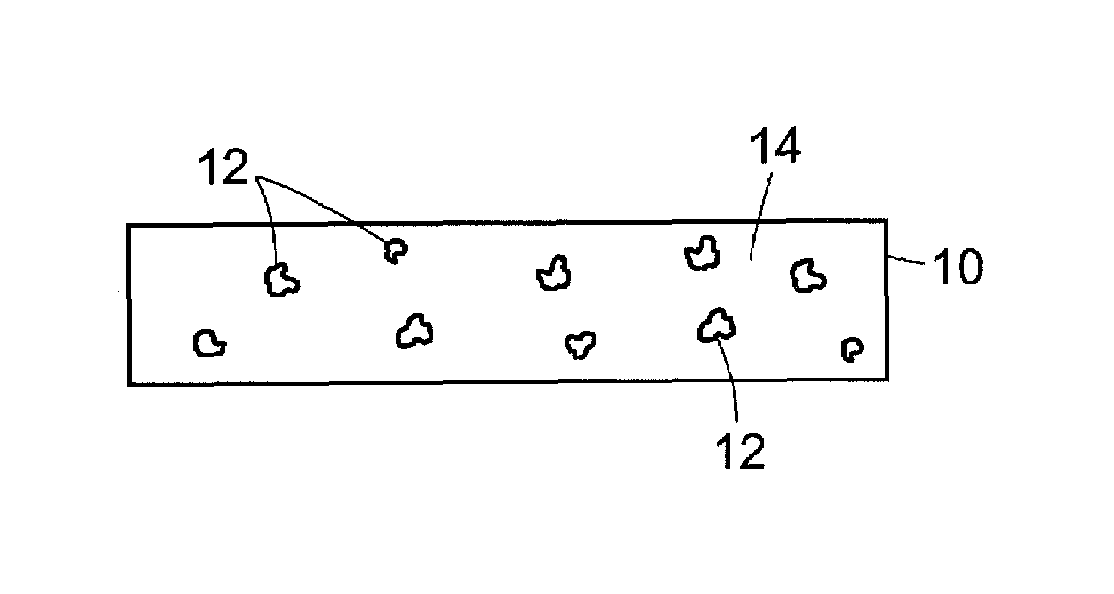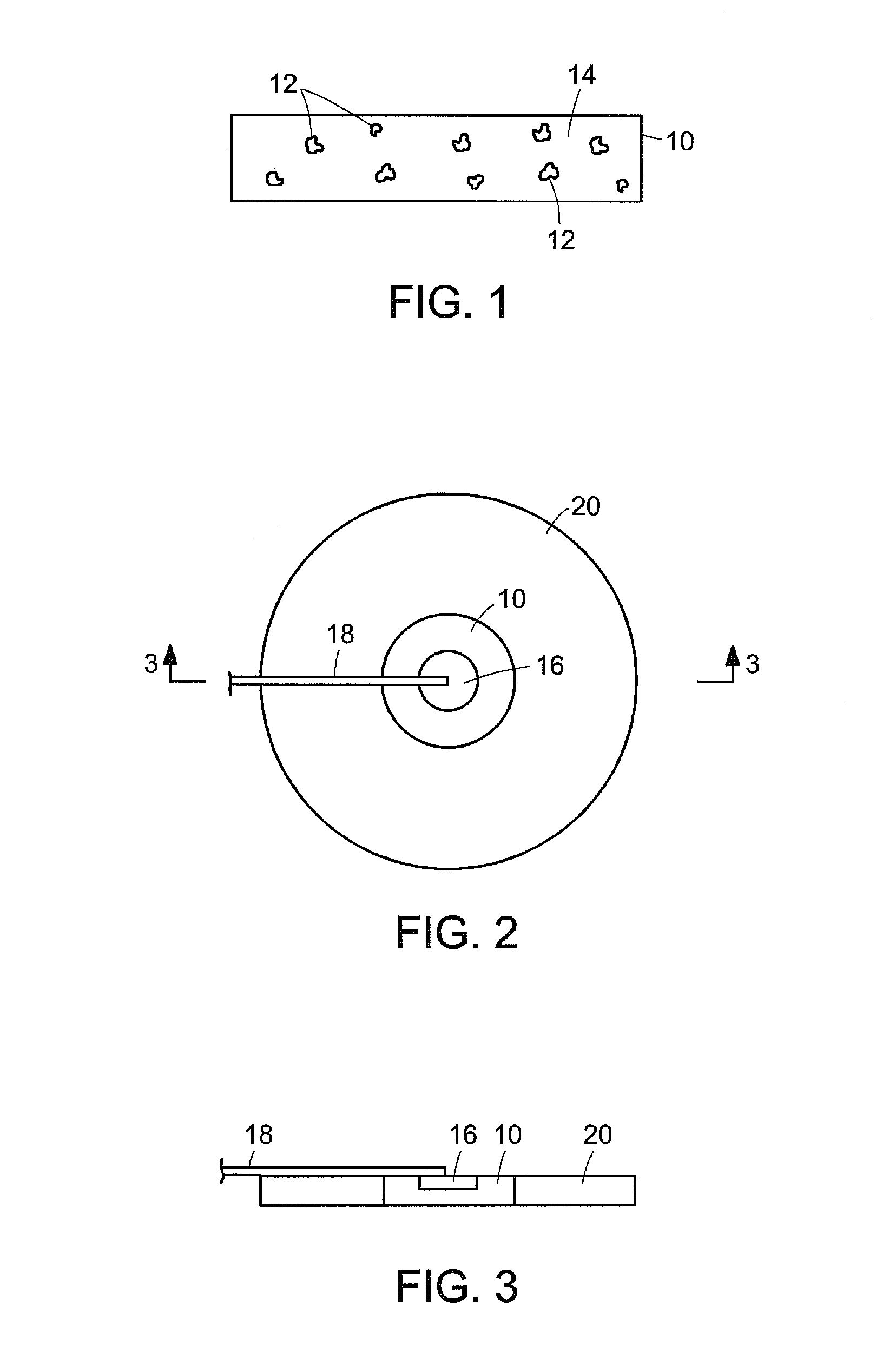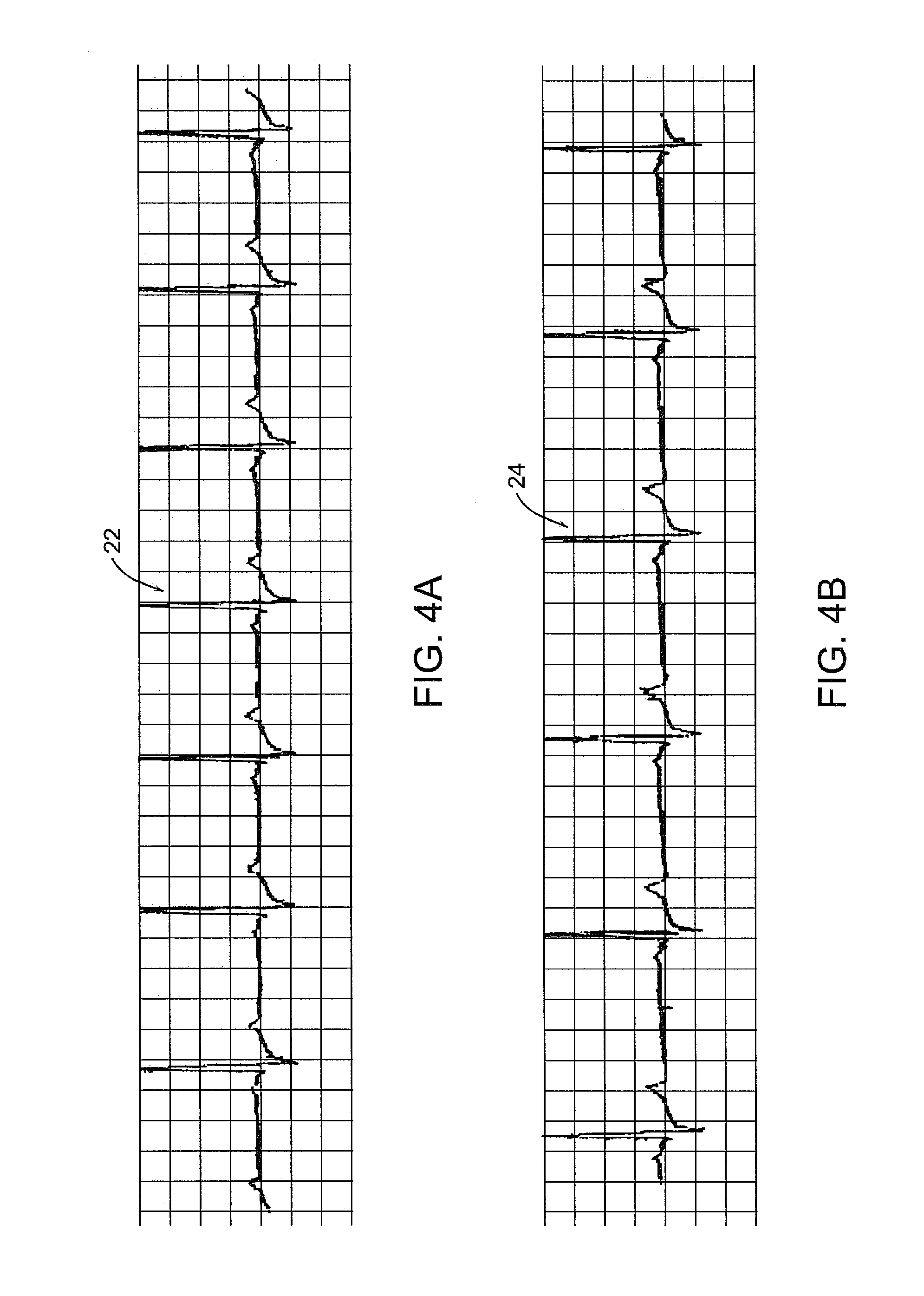Hydro-insensitive alternating current responsive composites
a technology of alternating current and composites, applied in the field of polymer materials, can solve the problems of improper function, adversely affecting the cost of sensors that use such conductive adhesives and the amount of use of any particular sensor
- Summary
- Abstract
- Description
- Claims
- Application Information
AI Technical Summary
Problems solved by technology
Method used
Image
Examples
Embodiment Construction
[0017]It has been discovered that a polar material (such as an organo salt) may be dispersed within a polymeric material of sufficient concentration that the resulting composite may be responsive to the presence of an alternating current yet not be sensitive to water gain or loss from ambient temperature or humidity conditions. For example, as shown in FIG. 1, a composite 10 may include an organo salt 12 that is dispersed within a polymeric material 14. If the organo salt 12 has crystallized out of the polymeric material or has bloomed to the surface, then the salt is not compatible with that given polymer, thus the non-homogenous system will not respond to pick up the alternating current signal. If, on the other hand, the salt becomes dissolved within the polymeric material (rendering the polymeric material clear), then the two materials are compatible, and a substantially homogenous mixture exists to form the desired alternating current responsive blend. When the salt is compatibl...
PUM
| Property | Measurement | Unit |
|---|---|---|
| dielectric constant | aaaaa | aaaaa |
| frequency | aaaaa | aaaaa |
| dielectric constant | aaaaa | aaaaa |
Abstract
Description
Claims
Application Information
 Login to View More
Login to View More - R&D
- Intellectual Property
- Life Sciences
- Materials
- Tech Scout
- Unparalleled Data Quality
- Higher Quality Content
- 60% Fewer Hallucinations
Browse by: Latest US Patents, China's latest patents, Technical Efficacy Thesaurus, Application Domain, Technology Topic, Popular Technical Reports.
© 2025 PatSnap. All rights reserved.Legal|Privacy policy|Modern Slavery Act Transparency Statement|Sitemap|About US| Contact US: help@patsnap.com



